It is important to prioritize your ride. The most important part of prioritizing what you are going to work on is not what you choose to work on but rather what dictates you to choose those things to work on. What should dictate what you “choose” to work on should come from the horse you are working with. What do they feel like, what do they need physically and mentally, what do they need from you as the rider (voice, leg cues, seat, hands, etc.)? It takes time, practice, and a willingness to learn to develop the skill it takes to feel and see what your horse needs.
Too often, we ask our horses to be straight from a young age. It is common for the rider to ask the horse to be straight before being equally balanced left and right. Horses are asked to be straight before they find balance and understanding. Straightness is not the goal of training but rather the result of it. A horse that is correctly trained with a technique that allows him to mentally understand and relax as well as perform the exercises to make them more balanced and athletic will ultimately be a horse that can be straight.
Straightness should be a test to test the training itself. When you let the horse be straight, he should stay between all of the rider’s passive aids. Passive aids mean that the rider is not doing anything to assist the horse, but the rider is ready to help the horse if needed. You should not hold your horse in a straight position; this would be false straightness. If a horse is forced to be straight before they are truly balanced, they will become rigid in their body to compensate for the lack of balance and become reliant on the aids of the legs and hands. When a horse becomes reliant on the aids, you have to use them all of the time, and then your horse slowly becomes duller and duller to the aids, and so begins the vicious cycle of tug-a-war.
Straightness is the kiss of death for a horse if it is prioritized above balance and suppleness. Straightness fixes nearly nothing! That’s because straightness is a result, not an exercise. When people are sore, we stretch, we bend, we move our body in all different directions to work out the stiffness so that we feel better and can be comfortable in a straighter position again. Imagine a soccer game where the players were always straight. (Straight up because we are vertical, unlike our horizontal partner, the horse.) It would be a very awkward-looking game that is not very exciting. If soccer players were forced to play this way, they would not be able to show their unique talents and abilities based on how they are built, their preferences to train, and how they perceive the game themselves. As for horses, we have become accustomed to seeing a cookie-cutter look for all the horses. Horses that are all in the same position as each other and for every movement. It is not possible for all horses to maintain balance, suppleness, and mental relaxation in the same posture. Not all horses have the same conformation. Not all horses have the same strengths and weaknesses. Not all horses have the same preferences.
Don’t try to make your horse look like the next horse or look the same way as another horse you admire and aspire your horse to be someday. Your horse is just as much an individual as you are. Your horse’s balance and position need to adjust to each and every movement. This allows the horse to stay supple during the movement because balance and lightness exist! Whenever you see a soccer player change directions while dribbling the ball down the field, you will see their position change to adjust their balance for that next step, whether one step or twenty.
Humans are naturally controlling. The horse’s natural response to control is resistance. With time, you can learn how to be in control without being controlling. Tell your horse what movement you want, and then let them show you how they can do it. Let your horse be themselves and guide you with what they need to be mentally comfortable, strong, flexible, supple, and balanced. All of these things together will ultimately result in straightness.
.
